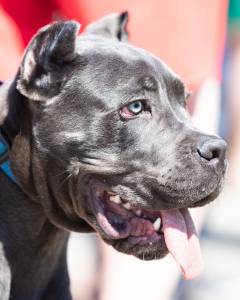
Understanding Your Dog’s Triggers
The first step in calming down your dog is to understand what triggers their anxiety or hyperactivity. Is it a specific noise, like thunder or fireworks? Is it being left alone for extended periods? Are there certain situations that make them feel uncomfortable or threatened? By identifying these triggers, you can start to develop strategies to help your dog cope with their stress.
Creating a Safe Space
Just like humans, dogs can benefit from having a safe and comfortable space where they can retreat when they’re feeling overwhelmed. This could be a cozy corner with their bed and favorite toys or a crate if they’re used to it. By providing a designated safe space, you can help your dog feel secure and relaxed during stressful times. It’s important that this space remains a positive environment, so avoid using it as a punishment or a place of isolation.
Physical and Mental Exercise
Regular physical exercise is essential for maintaining a dog’s overall well-being. A tired dog is often a calmer dog. Taking your dog for regular walks, runs, or engaging in playtime can help release excess energy and reduce anxiety. Additionally, mental stimulation through training, puzzle toys, or interactive games can help keep your dog’s mind engaged, preventing boredom and anxiety.
Calming Techniques
When your dog is showing signs of anxiety or hyperactivity, there are several calming techniques you can use to help them relax. One effective method is to use deep pressure therapy, such as gentle massage or using a weighted blanket designed for dogs. This can have a calming effect and provide a sense of security for your pet. Additionally, playing soothing music or using pheromone diffusers can help create a calming atmosphere in your home.
Positive Reinforcement
Using positive reinforcement techniques can also help calm down a stressed or anxious dog. By rewarding calm behavior with treats, praise, or affection, you can help your dog associate relaxation with positive experiences. This can be particularly effective when dealing with separation anxiety or fear of specific triggers.
Seeking Professional Help
If your dog’s anxiety or hyperactivity is severe and persistent, it’s essential to seek professional help from a qualified veterinarian or a certified dog behaviorist. These experts can provide personalized advice and strategies to help manage your dog’s stress and improve their overall well-being. Additionally, they can recommend potential medications or supplements that may assist in calming your dog in extreme cases.
Helping your dog calm down is an essential part of being a responsible and caring pet owner. By understanding your dog’s triggers, providing a safe space, incorporating regular exercise, using calming techniques, and seeking professional help when needed, you can help your furry friend feel more at ease during stressful times. Remember, patience and empathy are key as you work to support your dog’s emotional well-being. With the right approach and consistent effort, you can make a positive difference in your dog’s life and strengthen the bond you share.
[/fusion_text]



